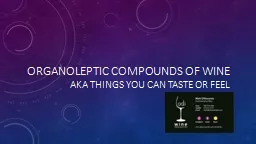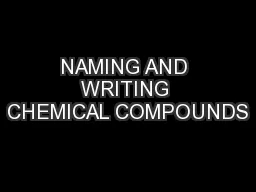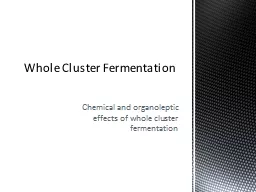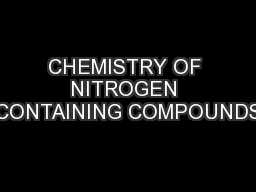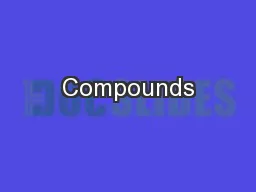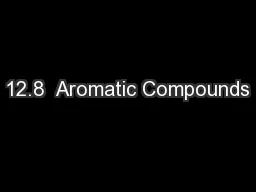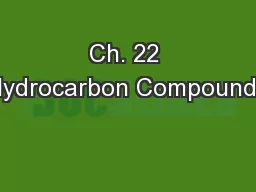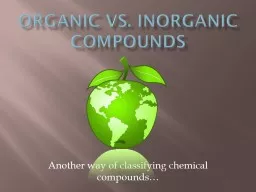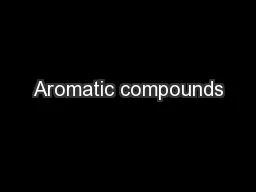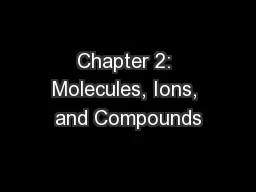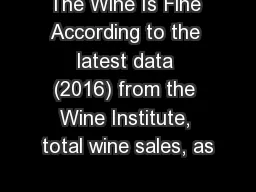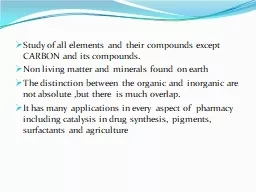PPT-Organoleptic Compounds of Wine
Author : briana-ranney | Published Date : 2017-06-24
AKA Things you can taste or feel Organoleptic Compounds of Wine GOALS To detect or learn to detect small differences in various compounds that are commonly found
Presentation Embed Code
Download Presentation
Download Presentation The PPT/PDF document "Organoleptic Compounds of Wine" is the property of its rightful owner. Permission is granted to download and print the materials on this website for personal, non-commercial use only, and to display it on your personal computer provided you do not modify the materials and that you retain all copyright notices contained in the materials. By downloading content from our website, you accept the terms of this agreement.
Organoleptic Compounds of Wine: Transcript
Download Rules Of Document
"Organoleptic Compounds of Wine"The content belongs to its owner. You may download and print it for personal use, without modification, and keep all copyright notices. By downloading, you agree to these terms.
Related Documents

